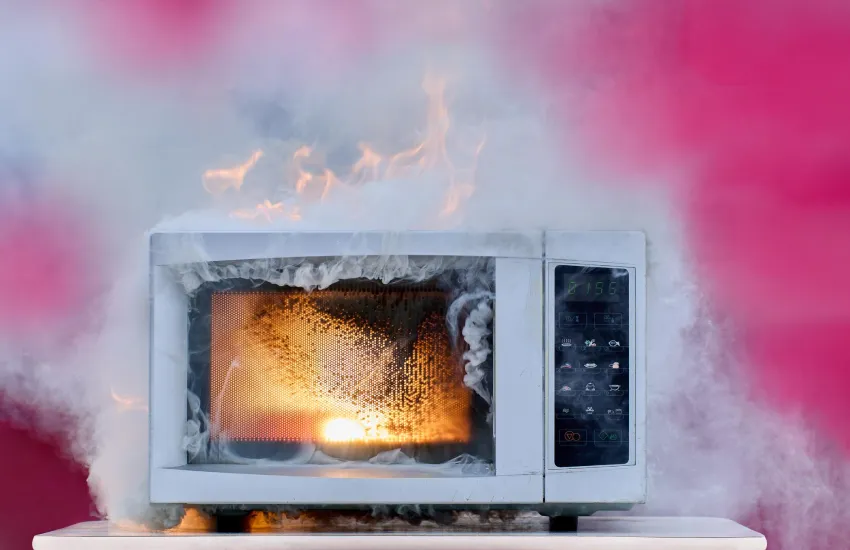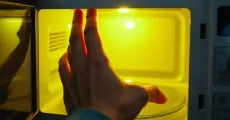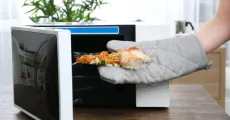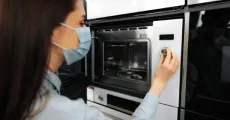Zapping Microwave Power Problems: | A Comprehensive Troubleshooting Guide

This comprehensive guide tackles common microwave power issues, offering step-by-step troubleshooting advice and DIY solutions. Learn to safely diagnose problems, from power failures to heating inconsistencies, and discover when it’s time to call in the experts. Perfect for homeowners seeking to revive their microwaves and avoid unnecessary replacements.
Zapping Microwave Power Problems: A Comprehensive Troubleshooting Guide
In our fast-paced world, a malfunctioning microwave can throw a major wrench in our daily routines. Whether you’re a busy professional reheating last night’s leftovers or a parent preparing a quick meal for hungry kids, microwave power issues can be frustrating and disruptive. However, you don’t need to worry, as this guide will acquaint you with the methods to tackle common microwave power problems head-on, potentially saving you time and money.
Your fridge is a kitchen superstar as it keeps all your food fresh and drinks cold.
But does the fridge feel warm when you open it?
Is there water all over the floor?
Fridge issues are the worst!
Understanding Microwave Power Issues
Microwave power problems can manifest in various ways, from complete failure to turn on to inconsistent heating. These issues often stem from electrical components wearing out or malfunctioning over time. Understanding the basics of how your microwave operates is crucial for effective troubleshooting.
Safety First: Precautions Before Repairs
Before diving into any microwave repair, it’s paramount to prioritize safety. Microwaves contain high-voltage components that can retain a charge even when unplugged. Follow these essential precautions:
- Always unplug the microwave before attempting any repairs.
- Wait at least 24 hours before opening the microwave to allow the high-voltage capacitor to discharge naturally.
- Use insulated tools and wear rubber-soled shoes when working on the appliance.
- If you’re unsure about any step, don’t hesitate to contact a professional. Your safety is worth more than any potential savings from DIY repairs.
Common Microwave Power Problems
Microwave Won’t Turn On
This is often the most frustrating issue, as it renders your microwave completely useless. Possible causes include:
- Power supply problems
- Blown fuses
- Faulty door switches
No Heat Generation
If your microwave runs but doesn’t heat food, you might be dealing with:
- A defective magnetron
- A faulty high-voltage diode
- A malfunctioning capacitor
Display Malfunctions
A blank or erratic display can be caused by:
- Control board issues
- Touchpad problems
Turntable Troubles
If your food isn’t rotating, consider:
- A worn-out turntable motor
- Control board malfunctions
Interior Light Issues
A dark microwave interior could be due to:
- A burnt-out bulb
- Faulty light socket or wiring
DIY Troubleshooting Steps
Now that we’ve identified common issues, let’s explore some DIY solutions:
- Power Supply Check: Ensure your microwave is properly plugged in and the outlet is functioning. Try plugging another appliance into the same outlet to verify.
- Door Switch Test: Clean the door latch area and check if the door is closing properly. A misaligned door can prevent the microwave from starting.
- Fuse Inspection: Locate the fuse (usually near the power cord entry) and test it with a multimeter. Replace if there’s no continuity.
- Control Board Reset: Unplug the microwave for a few minutes, then plug it back in. This simple reset can sometimes resolve electronic glitches.
- Turntable Motor Check: Remove the glass tray and manually spin the turntable support. If it’s difficult to turn, the motor might need replacement.
Routine Measures for Prevention
To keep your microwave running smoothly and avoid future power issues, follow these maintenance tips:
- Clean the interior regularly to prevent food buildup.
- Avoid slamming the door, which can damage the door switches.
- Don’t run the microwave empty, as this can damage the magnetron.
- Use microwave-safe containers to prevent arcing and potential damage.
By following these simple steps, you can extend the life of your microwave and reduce the likelihood of power problems.






Bottom Line
While DIY troubleshooting can resolve many issues, some problems require expert intervention. Contact a microwave repair charlotte nc professional if:
- You’re dealing with high-voltage components like the magnetron or capacitor.
- Multiple components seem to be malfunctioning.
- You’ve tried basic troubleshooting without success.
- There’s any sign of burning, sparking, or unusual odors.
Don’t put your safety at risk! CLT Appliance Repair as the tools, expertise, and experience to handle complex microwave issues safely and efficiently.
FAQs
This could be due to a faulty magnetron, diode, or high-voltage capacitor. These components are crucial for generating and directing microwaves to heat your food.
With proper care, a quality microwave can last 7-10 years. However, usage frequency and maintenance play significant roles in its lifespan.
If your microwave is relatively new (less than 7 years old) and the repair cost is less than half the price of a new unit, repairing is often worth considering. For older units or more expensive repairs, replacement might be more cost-effective.
Modern microwaves are designed with multiple safety features to prevent radiation leaks. However, if you suspect any issues, stop using the microwave immediately and have it inspected by a professional.
A loud humming could indicate problems with the magnetron, diode, or cooling fan. If the noise is accompanied by poor heating performance, it’s best to have it checked by a technician.
Don't let a malfunctioning Microwave disrupt your daily life. Contact CLT Appliance Repair today at 704-606-9043 to schedule your oven repair service.
We'll have your Microwave back to optimal performance in no time!
Freezer Repair Indian Land SC | Freezer Repair Indian Trail NC | Freezer Repair Pineville NC | Freezer Repair Rock Hill SC | Freezer Repair Belmont NC | Freezer Repair Matthews NC | Freezer Repair Lancaster SC | Freezer Repair Cornelius NC | Freezer Repair Fort Mill SC | Freezer Repair Concord NC | Freezer Repair Denver NC | Freezer Repair Monroe NC | Freezer Repair Mooresville NC | Freezer Repair Harrisburg NC | Freezer Repair Lake Wylie SC | Freezer Repair Huntersville NC | Freezer Repair Kannapolis NC | Freezer Repair Mint Hill NC | Freezer Repair Waxhaw NC | Freezer Repair Troutman NC | Freezer Repair Davidson NC | Freezer Repair Gastonia NC | Freezer Repair Charlotte NC

